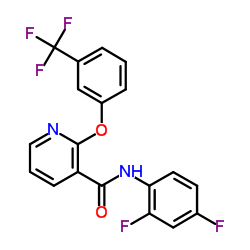Evolution of soil biological properties after addition of glyphosate, diflufenican and glyphosate+diflufenican herbicides.
Manuel Tejada
文献索引:Chemosphere 76(3) , 365-73, (2009)
全文:HTML全文
摘要
The aim of this paper was to study in laboratory the degradation and the effects on biological properties in two soils after the addition of glyphosate, diflufenican and glyphosate+diflufenican. One hundred grams of sieved soil (<2mm) were mixed with (i) 13mL of Zarpa (16% glyphosate and 4% diflufenican) prepared in a water solution of 1L (0.52g of glyphosate and 2.08g of diflufenican), (ii) 5.2mL of Round up (40% glyphosate), prepared in a water solution of 1L (0.52g of glyphosate), and (iii) 1.19mL of Brodal (43.5% diflufenican), prepared in a water solution of 1L (2.08g of diflufenican). Soil samples were collected after 0, 1, 5, 10, 15, 30, 60, 120 and 180d of incubation and analyzed for microbial biomass-C and dehydrogenase, urease, beta-glucosidase, phosphatase, arylsulphatase activities and glyphosate and diflufenican contents. At the end of the experiment, in the clayey texture soil the glyphosate and diflufenican contents were higher 50% and 30.7%, respectively, for the glyphosate+diflufenican treatment compared to glyphosate and diflufenican treatments, respectively. In the sandy loam texture soil the glyphosate and diflufenican contents were higher (38.9% and 39.4%, respectively) when the glyphosate and diflufenican were added as Zarpa than Round up or Brodal. The application of glyphosate+diflufenican mixture to soil increased the toxic effects of both herbicides in the soil biological activity and the individual soil persistence of each herbicide.
相关化合物
| 结构式 | 名称/CAS号 | 分子式 | 全部文献 |
|---|---|---|---|
 |
吡氟草胺
CAS:83164-33-4 |
C19H11F5N2O2 |
|
Multiresidue method for the determination of 13 pesticides i...
2011-09-15 [Talanta 85(3) , 1500-7, (2011)] |
|
Single drop microextraction and gas chromatography-mass spec...
2013-12-01 [Environ. Monit. Assess. 185(12) , 10225-33, (2013)] |
|
Rainfastness and adsorption of herbicides on hard surfaces.
2005-08-01 [Pest Manag. Sci. 61(8) , 793-8, (2005)] |
|
Spatial variation in the degradation rate of the pesticides ...
2006-01-01 [Environ. Pollut. 139(2) , 279-87, (2006)] |
|
Use of metabolic control analysis to give quantitative infor...
2009-10-01 [New Phytol. 184(2) , 330-9, (2009)] |